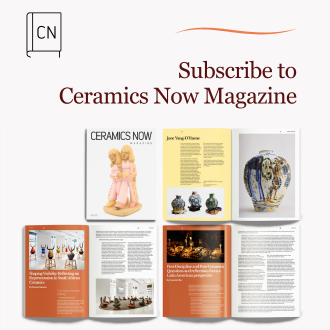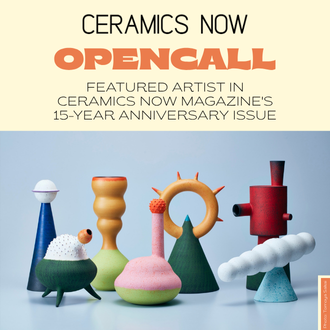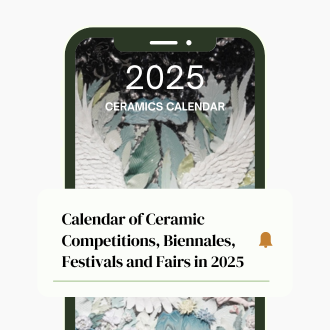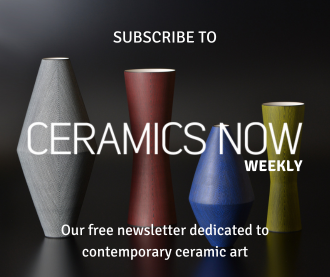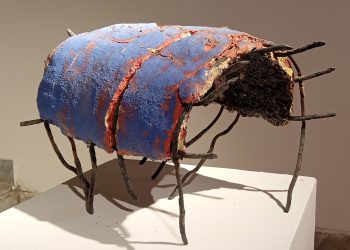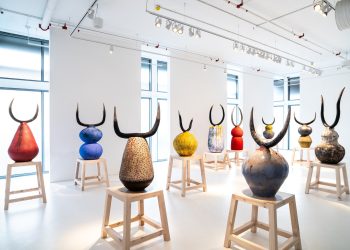Originally from the Belgian Ardennes, Nathalie Campion was a solitary child who spent her free time playing in the forest. She is a nature girl. After 30 years of hectic professional life in Paris (fashion, events, pharmaceuticals, etc.), Campion decided to return to the land and settle in her Ardennes home.
This return to her roots, this need for truth will awaken her desire to return to clay.
She has done many artist residencies to enrich her research and her practice of ceramics. She has mainly worked on her projects at the Pierre Culot studio.
In the second half of 2022, she leaves for Guadalajara, Mexico, where she is welcomed by the exceptional ceramic factory ‘Ceramica Suro’ to realize her next project.
Her first solo show was in March 2019 at the OV project gallery in Brussels and Art Brussel. She then exhibited at group shows in Brussels at Spazio Nobilie, Art Luxembourg, OV project. In the meantime, she was selected by the Collectible Design Art Fair for the Curated Young Designers Section, Brussels in 2020. She also directed a film during the pandemic for Luxelakes A4 Art Museum, Chengdu, China.
In 2022, she exhibited her project ‘I’ve lost my head’ in a solo show in collaboration with Atelier Jespers and Johnatan Gallery Kugel, Brussels.
Visit Nathalie Campion’s Instagram page.
Featured work
Selected works, 2019-2021
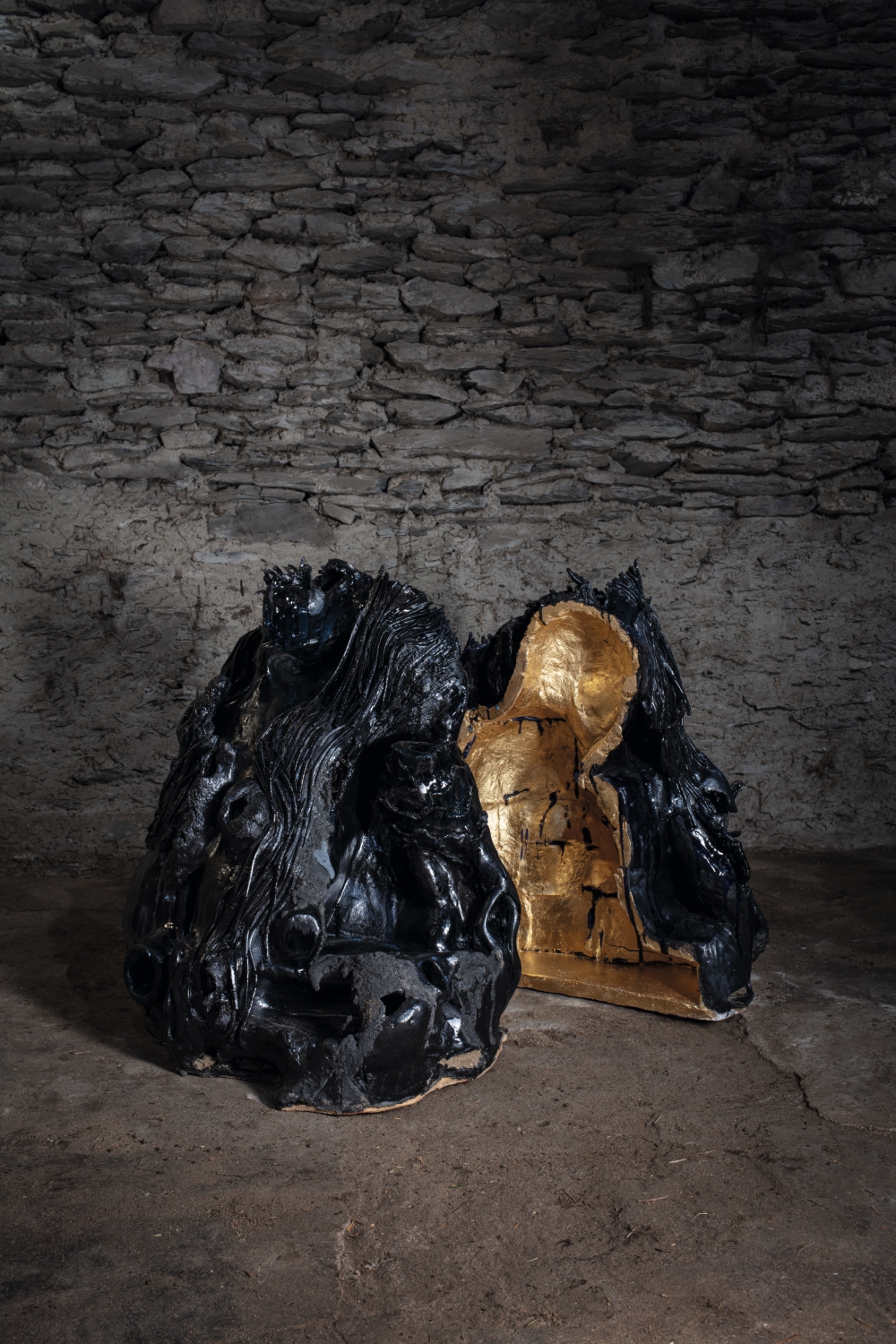
… and the forest feeds me – I would like to feed it
A forest is a daydreaming place. The sounds, the smells, and the vegetal elements that compose it all invite one to have sweet dreams or mysterious nightmares. The strains seem petrified, the leaves seem to block the sun and the damp soft ground whispers under our feet.
However, this place has a welcoming atmosphere and an intimate sense of kindness.
A paradox then appears: between fascination and repulsion, fear and desire, miracle and sacrifice. The work of Nathalie Campion addresses the questions that this duality provides.
The resulting ceramics, their volumes, and their shapes remind us of distant forests. The clay is lifting, unraveling. Nathalie Campion works with it as if it were a living body. Her relation with it is tactile, carnal, and the work that we see is the main evidence of this relationship. The earth, the clay, becomes a vector of sensuality, an object that desires, a subject. Spring is slowly coming.
In those sculptures, the body is secretly present. The different shapes, of the tree stumps, imply this presence. It has no face. Like a tribute, one last elegy.
A tree stump is a figure of bravery: a body that has no legs to run and no arms to gain strength. Present, still, strong. No roots, no branches. And between the strips, the ichor, the Greek god’s blood. A tree stump is a river. It is the resilience of a strong nature that renews itself while going through death. It is a magnificent self-sufficiency system, the second part of a cycle, the idea of a sacrifice.
Peeled like a fruit in which we would discover a secret treasure, the work seems to be slowly crumbling. It starts a journey towards the damp soil. This material that melts into the ground is reborn. The strips contain something, they are around it. They were built as walls and fortresses. They keep a secret, they fossilize it, and they heal it.
A material that burns and that shapes the world. Some pieces seem barely extinguished, still hot. Their wounds are visible and their burnt body invite contemplation. It all could explode at the slightest movement. An almost fatal relationship with the clay is established, a power relationship: the clay is dictating its rhythm. It shapes its own cracks until the fire stops it. Sometimes charred, sometimes burnt, the sculptures of Nathalie Campion evoke a certain brutality of Nature. Our time would tend to make us believe it is weak, when in fact it will survive us all.
Nathalie Campion’s use of color is a rejection of the inessential. Those shades add to the discretion that emanates from the work. They allow the existence of those shapes, they give them as they are, devoid of unnecessary artifacts. The shades are not used decoratively, they are here to shape the clay, they are the final material.
The lava flows, and the mudslides define the final perimeter of those sculptures. They are not on it but vitrifies with it, in a fire that binds them together as one piece. One presence. The brutality that arises from this union of a shape and a shade is the witness of a work resulting from a collision of two different powers: Nature and Human. Clay as a material that is built by violence.
Nathalie Campion works with this violence. The viewer is the main witness of this brutality. Clay is a fragile material, but it is mostly free. To oppose strength and fragility would have no meaning here. The material shows us that fragility lies in strength, it composes it. The opposite of strength is not fragility, it is weakness. And clay has no weakness. To work with a material so fragile and yet so strong is a way of demonstrating a new relationship with the world: Resilience, knowledge, and awareness. Idleness is fertile.
As we observe the ceramics and the videos made by Nathalie Campion, we can understand something intimate about her: she is an angry woman. Death, blood, suffering clay, all those elements tend to demonstrate something: the world is going to ruin. Human heritage brings a lot of pain to the world. The material goes through critical states, it almost breaks. The darkness adds to the story. It is a manifest. The planet, the human behavior, everything is melted together, everything seems to be about to collapse.
Nathalie Campion works in balance on the ridge line: facing the forest, on the edge of a precipice.


